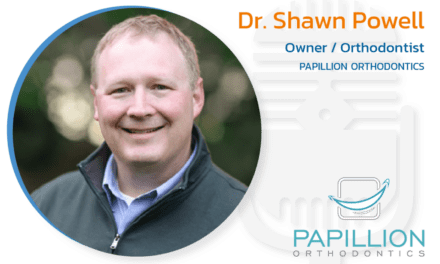The six elements of a slow-and-steady-rise to the top
By Roger P. Levin, DDS
In our quest to provide orthodontic practices with the tools they need to succeed, we facilitated a 30-year ongoing study of the Top 10% orthodontic practices in the country. Through this study we were able to identify the specific principles that were used by these practices to help them reach the Top 10%. This article will focus on how orthodontic practices use these principles to move gradually into the Top 10% and the lessons that others can learn from this research.
Arriving into the Top 10%
Findings from our study indicate that most orthodontic practices do not skyrocket into the Top 10%. By and large it’s a slow process that on average takes about 5 to 7 years following a practice opening or purchase. We also noted that in most cases the practices did not have some specific factor that made them successful. So, while there is no perfect location or magical skills that lead to automatic success, here are the elements that helped most of these practices to move gradually into the Top 10%:
- A steady stream of new patients. While new patient numbers were not outstanding at first, they showed continual growth year after year. Referrals came mainly from other patients and referring doctors and contributed to a large base of new patients annually.
- Excellent treatment coordinator (TC) systems and processes. Not all practices had official treatment coordinators from the beginning, but the doctors worked to master the treatment coordinator sales process and were able to train treatment coordinators as they were brought on board.
- Outside experts. Practices relied on experts to help implement management systems and treatment coordinator training. In many cases significant jumps in production were noted within a year following engagement of consultants and experts working with the practice.
- Robust marketing programs. The practices were typically fun environments that were geared toward enjoyment by patients, especially children. Amenities included game rooms, homework rooms, and computer access. Featured activities included ongoing contests, raffles, and social media. There was also an equal focus on referring doctors and referral-based marketing that resulted in a much higher than average number of referrals from referring doctors than most other practices.
- Training. Most of these practices didn’t have a large staff early on, but as they added team members, they were able to provide the right level of training, systems, and scripting to help them succeed in their job. Several practices even cultivated mentoring programs where an existing team member would work directly with a new team member for 12 months. Programs like these helped to drastically shorten the time required for new staff members to be indoctrinated into the culture of the practice and to perform at a high-level.
- Tracking. Tracking measurements was common in most of these practices. The doctors wanted to know how the practice was performing—good news or not. They looked at any negative factors from the standpoint of improvement rather than ignoring any information that was less than pleasant. For example, one doctor found that adult patients weren’t responding well to the TC, finding it too difficult to relate to them. He immediately hired outside consultants to work with the TC. Within 1 year the treatment coordinator increased her adult start rate by 29% and continued to improve from there.
Read more: 5 Ways to Move Your Orthodontic Practice Forward
Slow and Steady Wins
Again, it must be emphasized that becoming a top practice is a slow process that on average takes about 5 to 7 years. From day one, top practices take slow deliberate steps toward the Top 10%. For example, we found that one practice implemented step-by-step systems into the practice in the first year even when they weren’t that busy. The second year, they focused on the marketing to increase referrals and referral sources moving five referring doctors to the level at which each was sending over $100,000. In the third year, the practice concentrated on hiring a TC who also worked as a dental assistant. During the fourth year, the practice focused on financial options and financial strategies that made it easier for patients to accept treatment. This practice did not move into the Top 10% until year 7 with additional modifications and improvements being made along the way. This is typical of orthodontic practices that move into and remain in the Top 10% of orthodontic performing practices.
The principles and strategies outlined above are a major part of why top practices were able to move into the Top 10%. However, this did not happen overnight. There was a continual focus on implementing excellent systems, measuring and tracking results, developing and designing improvement processes, and ongoing access to continuing education both clinically and managerially. OP
Roger P. Levin, DDS, is the CEO and founder of Levin Group, a leading practice management consulting firm that has worked with over 30,000 practices to increase production. A recognized expert on orthodontic practice management and marketing, he has written 67 books and over 4,000 articles and regularly presents seminars in the U.S. and around the world. To contact Levin or to join the 40,000 dental professionals who receive his Ortho Practice Production Tip of the Day, visit levingroup.com or email [email protected].

NEW LEVIN GROUP PROGRAM
We are pleased to announce the launch of the New Levin Group Orthodontic Marketing Program. This breakthrough program includes FIVE FOCUS AREAS—Patients, Parents, Social Media, Referring Doctors, and the Community.
Levin Group has been the leading orthodontic management and marketing consulting firm since 1985. We have worked with thousands of orthodontic practices.
If you would like to have a 30-minute discussion about your unique practice situation and how the New Levin Group Orthodontic Marketing Program can benefit you, please visit levingroup.com/orthodontic-marketing-program or contact Angela Pickett at [email protected].










